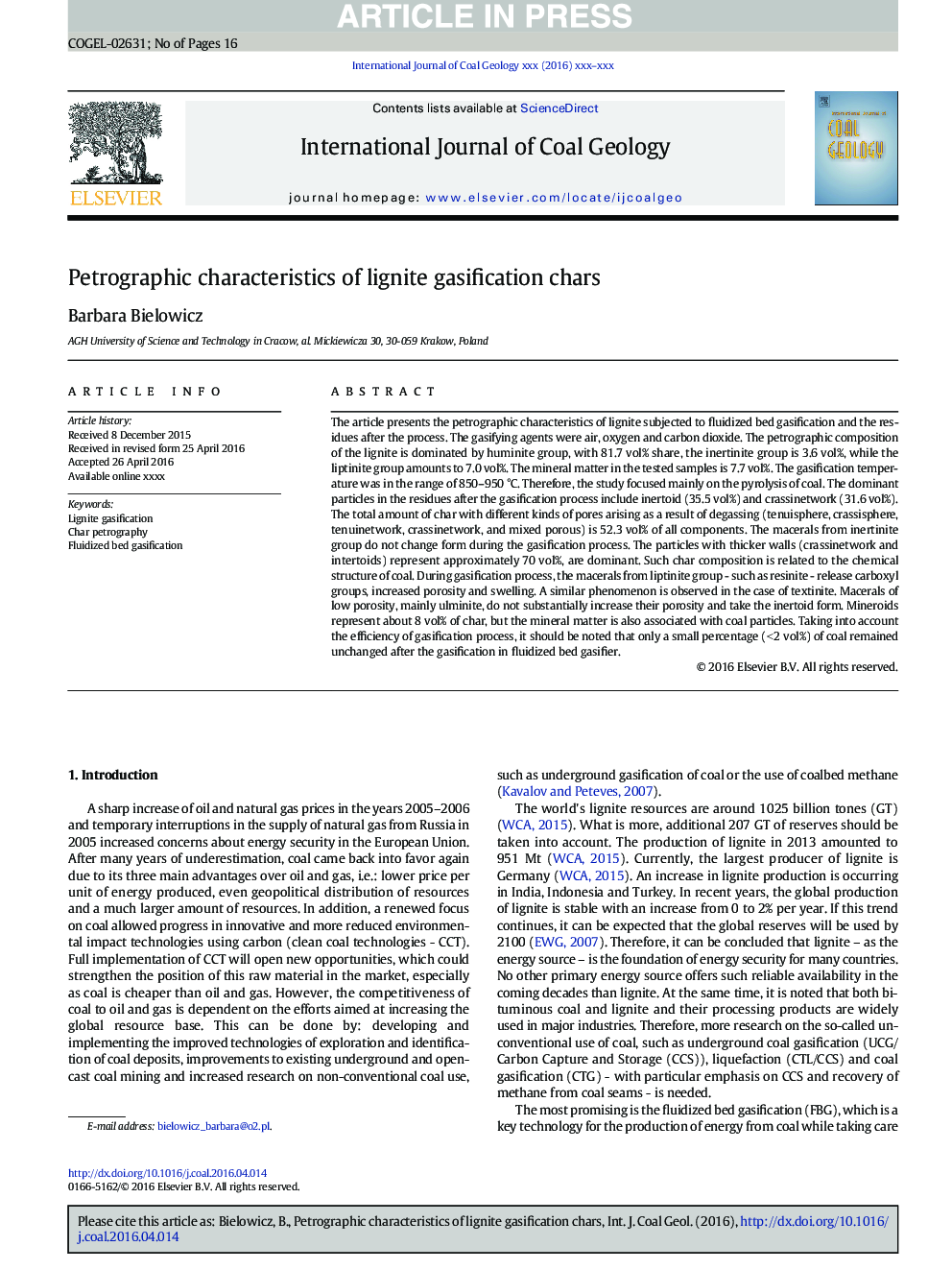| Article ID | Journal | Published Year | Pages | File Type |
|---|---|---|---|---|
| 5483802 | International Journal of Coal Geology | 2016 | 16 Pages |
Abstract
The article presents the petrographic characteristics of lignite subjected to fluidized bed gasification and the residues after the process. The gasifying agents were air, oxygen and carbon dioxide. The petrographic composition of the lignite is dominated by huminite group, with 81.7 vol% share, the inertinite group is 3.6 vol%, while the liptinite group amounts to 7.0 vol%. The mineral matter in the tested samples is 7.7 vol%. The gasification temperature was in the range of 850-950 °C. Therefore, the study focused mainly on the pyrolysis of coal. The dominant particles in the residues after the gasification process include inertoid (35.5 vol%) and crassinetwork (31.6 vol%). The total amount of char with different kinds of pores arising as a result of degassing (tenuisphere, crassisphere, tenuinetwork, crassinetwork, and mixed porous) is 52.3 vol% of all components. The macerals from inertinite group do not change form during the gasification process. The particles with thicker walls (crassinetwork and intertoids) represent approximately 70 vol%, are dominant. Such char composition is related to the chemical structure of coal. During gasification process, the macerals from liptinite group - such as resinite - release carboxyl groups, increased porosity and swelling. A similar phenomenon is observed in the case of textinite. Macerals of low porosity, mainly ulminite, do not substantially increase their porosity and take the inertoid form. Mineroids represent about 8 vol% of char, but the mineral matter is also associated with coal particles. Taking into account the efficiency of gasification process, it should be noted that only a small percentage (< 2 vol%) of coal remained unchanged after the gasification in fluidized bed gasifier.
Keywords
Related Topics
Physical Sciences and Engineering
Earth and Planetary Sciences
Economic Geology
Authors
Barbara Bielowicz,
